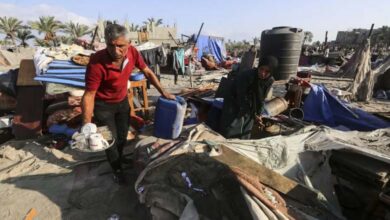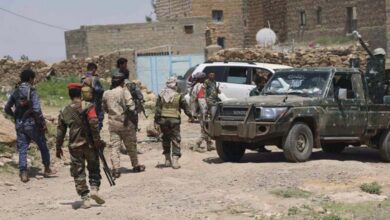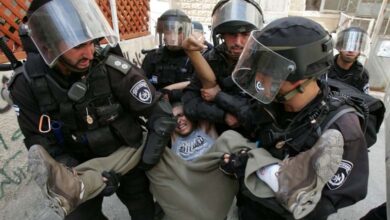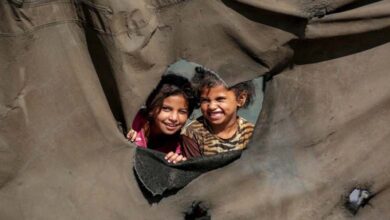Gaza News: The Blockade Enters Its Second Month and New Areas Added to Evacuation List
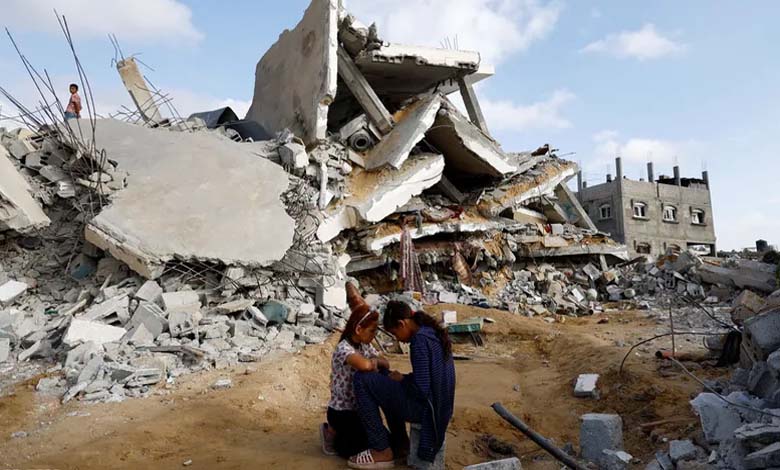
In Gaza, death is not limited to the bombings that claim lives; it extends to the famine ravaging neighborhoods as the Israeli blockade enters its second month.
After a month of Israel cutting off humanitarian aid to Gaza, relief agencies have reported that the humanitarian situation has deteriorated significantly, with the suffering of two million civilians worsening due to intensive Israeli military operations.
-
New Complication in Gaza Negotiations: Hamas Rejects Israel’s Latest Offer
-
Israel Expands the War in Gaza and Plans for Population Displacement
The United Nations and several non-governmental organizations, along with civilians in Gaza who spoke to CNN, report that hunger is spreading, opportunities to access clean water have diminished, and fleas have infested temporary displacement camps.
With Israel resuming its attack in March, which included several evacuation orders, the problems faced by the residents of the sector over the past 18 months have worsened.
Before the resumption of war, the Israeli government halted food and other humanitarian aid supplies to Gaza in an attempt to pressure Hamas to release more hostages and impose new conditions for extending the ceasefire.
Israel also accused Hamas of intercepting humanitarian aid shipments and diverting them to Gaza, a claim confirmed by the United States in May.
-
Gaza Truce: Three Disputes Prevent a Ceasefire Agreement
-
Hamas Hezbollah and Houthis: Netanyahu Unveils His Vision to End the Gaza War
Areas Added to the Evacuation List for the First Time
Over the past two weeks, more than 280,000 people have been displaced, and now two-thirds of Gaza’s land has become prohibited areas, according to the United Nations Office for the Coordination of Humanitarian Affairs (OCHA).
Last night, the Israeli army issued evacuation orders for areas in the central governorate: Sahaba, Samah, Al-Awda, Al-Zawaida, and Al-Salah. This is the first time since the outbreak of the war on October 7, 2023.
The evacuation order published by Israeli army spokesperson Avichay Adraee on his X account read: “To all residents of the Gaza Strip in the Deir al-Balah area, in the neighborhoods of Sahaba, Samah, Al-Awda, Al-Zawaida, and Al-Salah, this is a final warning before the attack. We will strike with great force any area from which rockets are fired.”
-
Gaza Bleeds… A Record Number of Deaths and No End in Sight
-
From Beirut to Gaza… A New Mission for Israel’s 36th Division
He added, “For your safety, you must immediately move south to the known shelters in the Mawasi area.”
Local residents said that a large movement of displacement was witnessed in those areas throughout the night, with significant hardship for children and the elderly.
Aseem Nabih, spokesperson for Gaza City Municipality, told CNN that after several recent evacuation orders, “people are literally being displaced everywhere, on main roads, in public parks, near garbage dumps, in squares, and even in buildings threatened with collapse.”
He added, “Even before the latest evacuation orders, only 40% of Gaza City had access to water.” He estimated that 175,000 tons of waste had accumulated throughout the city.
-
Plans for a Ground Incursion in Southern Gaza: A Climate Conducive to an Aggressive Approach
-
Latest News from Gaza: Israel Expands Operations in the North Mass Exodus towards the South
Jonathan Wital, a senior official at the United Nations Office for the Coordination of Humanitarian Affairs in the Palestinian Territories, stated earlier this week that “an unlimited war” is ongoing in Gaza.
In a report released on Friday, the UN Office for the Coordination of Humanitarian Affairs stated: “Gaza is facing an ongoing risk of hunger and malnutrition, as the comprehensive blockade on goods, which has now entered its second month, is almost completely halting the distribution of flour and closing all subsidized bakeries.”
The World Food Program stated on Thursday that all 25 subsidized bakeries throughout Gaza have closed their doors due to shortages of cooking gas and flour.
It also pointed out that over one million people were left without food parcels in March, and while hot meals continue to be provided, “current supplies are only enough for two weeks at most.”
-
A New Phase of War… Is Gaza Preparing for the Worst-Case Scenario?
-
“Netzarim” and “Salah al-Din” at the Heart of the Gaza Battle Again… Military Advance and Warning
A New Mechanism
The Israeli agency responsible for coordinating aid delivery to Gaza insists on the necessity of having “an organized monitoring and aid entry mechanism” to prevent Hamas from “seizing humanitarian supplies” and to ensure that the operations of organizations remain “neutral and impartial.”
The Coordinator of Government Activities in the Territories (COGAT) explained that a new mechanism under development will support relief organizations, enhance monitoring and accountability, and ensure that aid reaches civilian populations in need, rather than being diverted and stolen by Hamas.
According to an official in COGAT, the mechanism has been presented to international relief organizations but its use is contingent upon an agreement for a ceasefire or a change in government directives.
-
Bloody Dawn Strikes: Israel Escalates Attacks on Gaza
-
Back to square one… Why did Israel resume its war on Gaza?
Meanwhile, large quantities of aid are waiting outside Gaza.
The World Food Program indicates that around 89,000 tons of food are waiting outside the Gaza Strip, while food shortages have caused prices to surge, with the price of a bag of wheat flour rising by 450% from just a few weeks ago.
At the same time, OCHA pointed out that access to water remains “severely restricted”—with two-thirds of Gaza’s families unable to access six liters (about 200 ounces) of drinking water per day.
After improvements in water production and supply during the last ceasefire, relief agencies are now struggling to repair and maintain infrastructure.
This is also affecting sanitation in areas increasingly crowded with displaced people. According to OCHA, “Sanitation conditions across Gaza remain worrying,” with fleas and mites spreading in temporary displacement sites along the coast.
Gaza Between Biden and Trump
The administration of former US President Joe Biden repeatedly pressured the Israeli government to allow more humanitarian aid into Gaza, including halting a shipment of bombs due to concerns over the civilian population in the coastal enclave. However, this pressure almost disappeared under the administration of Donald Trump, according to CNN.
Gavin Kieler of the Norwegian Refugee Council stated at the end of March, “More than a million people are still urgently in need of tents in Gaza,” but his organization “has almost nothing left to distribute, even as it continues to witness these mass forced displacements happening daily.”
He added, “Many people, who have no alternative shelter, are living in damaged and structurally unsafe buildings, where incidents of buildings collapsing on men, women, and children are still being recorded.”
-
When Did Israel Plan to Resume the Gaza War? Smotrich Responds
-
Gaza on the Brink of Thirst… The Water Crisis Worsens Amid Fuel Shortages
In recent weeks, an average of 100 children have been killed or maimed daily in Gaza, according to UNICEF.
UNICEF Executive Director Catherine Russell stated that the children of the region “have been once again caught in a cycle of deadly violence and deprivation.”
UNICEF confirms that it and other agencies “have been unable to provide clothing and other essentials even for the most vulnerable displaced children, who have only the clothes they are wearing.”


